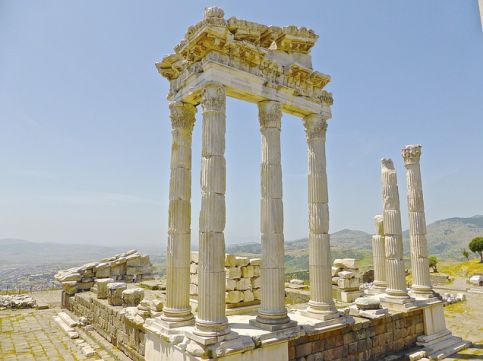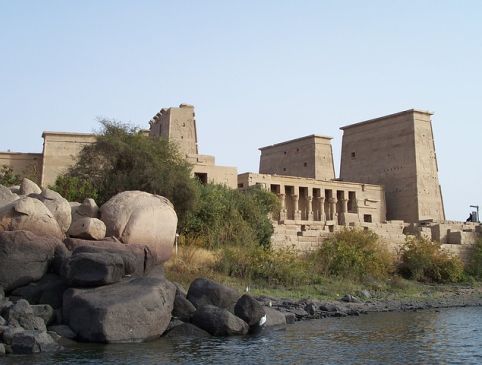Types of architecture – Complete list – Characteristics and More
Contents
What are the types of architecture?
To explain what are the types of architecture we must indicate that they are various artistic techniques that are used for the design and construction of buildings, as well as the designation of the buildings themselves in general, which can be houses, buildings, towers, monuments, etc. Architecture is responsible for the construction and planning of various buildings, using artistic techniques, as well as engineering and other disciplines, which are interrelated in the construction of buildings.
Definition of Architecture
In general, architecture is the art, in the sense of technique, of designing and constructing not only buildings, but also other objects. In the same way, architecture can be defined as the whole and perspective of a building.
Main Types of Architecture
The world continues to change and during so many changes we evolve in an exponential way with architectural geniuses and models, here we will see a little more about the main ones.
Historical or stylistic architecture
This is the name given to that architecture that has emerged over time in various places and has its own characteristics and its own architectural styles They are usually classified depending on the dominant period in terms of style, where it exerted influence that type or architectural style. Within this type are monuments and buildings of the public type, such as religious or military, and those of the private type, such as private houses. Art historians are those who are dedicated to studying this architecture and who classify the artistic styles that are related to this or that architectural style, during a certain historical period, taking into account the predominant artistic style of the time.
Popular or traditional architecture
This is the name given to those buildings that are made by the people themselves or by artisans with little instruction, such as masons, apprentices and laborers, who build houses, for living or for livestock, of a rural type, without grandeur, for simple daily use, built with materials such as wood, stone, etc., varying according to the country, the climate of the region or the local style.
Common or vulgar architecture
It is denominated this way to those constructions whose only objective is to have a utility, to satisfy in a useful way for which it is designed, in a practical way, without counting on the history or that it is artistic, neither thinking about the tradition of the region, only thinking to be practical and in many occasions they are usually constructions of a sober and even monotonous character, foreign to the artistic architecture properly.

Types of architecture according to its functionality
The architectural designs were often requested by the leaders of the time either by the 100% religious architecture, for the public the Civil and finally in case of war or protection the military, we see a little more about it
Religious Architecture
This is the name given to buildings that are focused on the religious field, with the purpose of housing large sectors of the population, which are the parishioners and to honor the divinities. They are constructions of great size and wonderful ornamentation, as can be seen in the various Egyptian, Greek, Roman temples and religious buildings and in the Christian cathedrals. Also within this religious type are smaller constructions such as oratories and hermitages, which are intended for a reduced “public”.
Military Architecture
This is the name given to constructions that have been created only to defend something, built to contain attacks and sieges, varying the materials and style according to the time. Constructions such as walls, fortresses and castles, reaching to build works that have both functionality and architectural beauty.
Civil Architecture
These are monuments and buildings of the civil type, constructions for the common use of the city, such as public theaters, congress chambers of deputies and gazebos, residences and government palaces, bridges, parks, monuments, as well as the various buildings of the civil government agencies. Being both beautiful and functional.
Types of architecture according to periods
Architecture has lived an infinity of changes not only for each period of history but also for the needs of each moment. Now we will see the main periods of architecture which you can deepen even more with a very complete article.
Archaic Architecture
It is called that which meets the basic needs such as creating dwellings for individuals or animals, without artistic style and simple, in order to take shelter from the weather, as well as those buildings dedicated to the worship of the gods or to perform magical-religious rituals. As an example we have the megalithic structures, with a religious purpose for the realization of rituals and the construction of houses or huts.
Sumerian-Mesopotamian Architecture
This is the name given to the buildings that emerged in Mesopotamia, within the Sumerian culture. Their constructions were made with adobe bricks, made of silt (clay) and straw. Houses, granaries, palaces and temples were built. As an example we have the ziggurats, which were semi pyramidal religious constructions.
Egyptian Architecture
This is the name given to the constructions that used materials such as stone for the higher classes and for royal, military, religious buildings and tombs. Examples are the pyramids and mastabas for funerary use.
Babylonian Architecture
This period is characterized by the construction of adobe walls, irrigation canals, palaces and temples. It has similarities to the Sumerian period. With religious buildings such as the Ziggurat, which were staggered buildings made by superimposed plateaus in a staggered manner.
Assyrian Architecture
This period is closely related to Chaldean-Babylonian architecture. The adobes and stone were used, both for the construction of palaces and fortresses. They are characterized by the creation of sculpted porticoes.

Greek Architecture
Mycenaean architecture was predominant at this time, consisting of somewhat crude constructions, with cyclopean walls and the frequent use of false vaulting. An example of this architecture is the lion’s gate of Mycenae. Greek architecture created three main orders or styles, Doric, Ionic and Corinthian, which were later extended to the Etruscans, Romans and are even used today.
Etruscan Architecture
The highlights of this period are the funerary buildings. They have similarities acquired from Greek architecture. They did not make much use of materials such as marble, using more stone in a somewhat crude or inelegant manner.
Roman Architecture
With great ingenuity and amazing ability the Romans were very clever and skilled in the construction of buildings in their time. They emphasized features such as tiers, columns, arcades and arches in addition to other building materials. The most famous buildings were amphitheaters, monuments, aqueducts and huge palaces and the most used materials were marble and brick and for ornaments different metals.
Medieval Architecture
They have a strong religious and feudal thinking, which is noticeable in their buildings. Craftsmen and architects took a great importance thanks to the knowledge they possessed, being the ones who designed the constructions. As an example we have churches, cathedrals, mosques, cathedrals, castles, monasteries and palaces, as a representation we have the Alhambra (in Spain).
Baroque Architecture
the main characteristic of this style of architecture was the excessively loaded decoration. The structures of the buildings of this type of architecture had a great quantity and quality of details and an unlimited variety that created an effect that to the eye of any person was difficult to distinguish one from another. Generally, this type of architecture had many statues, columns and gargoyles and also used techniques such as leaf gilding. However, it was also possible to differentiate two distinct environments that resembled scenarios using many fantasy elements and materials. The last thing we could point out about this style of architecture is that this style is seen in many works in Italy and was developed in palaces, churches and some other squares such as St. Peter’s Square.

Gothic Architecture
In Gothic architecture we can highlight the famous and beautiful church of Notre Dame. This style of architecture had its own characteristics, among them the structures that have arched windows, columns and domes also have their own characteristics. In addition you can see the vitreaux which were small representations made with pieces of colored glass representing an image. When talking about colors, dark colors are used more and also materials that try to transmit cold instead of warmth are used.
Renaissance Architecture
In this stage architecture began to have great advances that were based on the “classical” Greek and Roman styles, starting a new aesthetic stage in the constructions, inspired by the order and proportions of the classical world. As an example we have St. Peter’s Basilica in Rome and its square.
Postmodern Architecture
This type of architecture is a very current style that has been used and has been chosen today to build various buildings and houses. One of the main characteristics is the pluralism and ambiguity where it is mixed with various styles of decoration very different from each other. They use a mixture of colors, ornaments of different kinds and similar materials, and another feature is that they do not convey a particular message but there is free understanding.
Neoclassical architecture
this style of architecture takes different elements and uses a lot of delicacy when it comes to details, but it is much less loaded than baroque architecture. The ceilings of the buildings built with this style of architecture are high and with spacious dimensions, and its decoration is based mainly on paintings, chandeliers, moldings and mirrors. It was mainly used in palaces, royal residences or monuments.
Academicist Architecture
This style can be seen in most of the buildings in Buenos Aires, such as the Pizzurno Palace. It is characterized by the framed columns that were built in the main door, also had a complete symmetry from any point of view. It was very common to use black tiles or slate and when talking about the structures they used the towers and in some occasions they used domes with paintings.
Minimalist Architecture
It is especially characterized by a trend that is based mainly on simplicity, using few items and furniture, avoiding the combination of colors and shapes with very striking formats and in quantity, generating a perception of a larger space. Minimalist architecture lacks too many details, prioritizing the essence of the few elements and maximizing their appearance to find in it the beauty and the particular meaning of each piece. It eliminates decoration and points out the simplicity of the elements.
Sustainable Architecture
This type of architecture is associated with the optimization of natural resources, in search of a positive environmental impact as a base element. Environmental architecture prioritizes and exalts the value of buildings in projection with society and nature. Among its main characteristics we find the construction processes based on energy efficiency with great care not to use unnecessary expenses, so it analyzes and takes only what is necessary of the resources.
